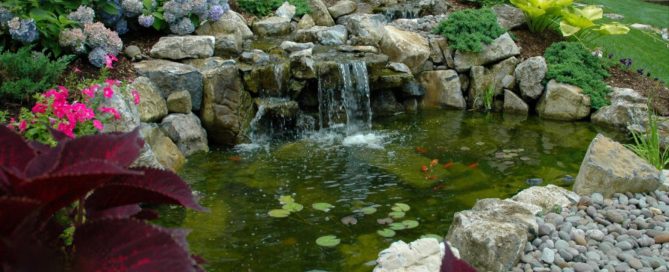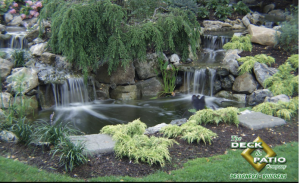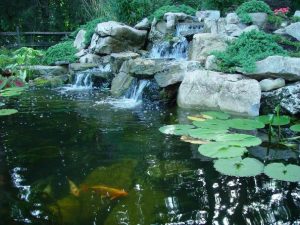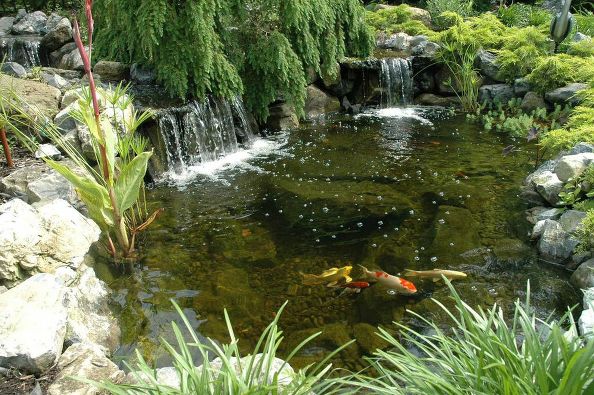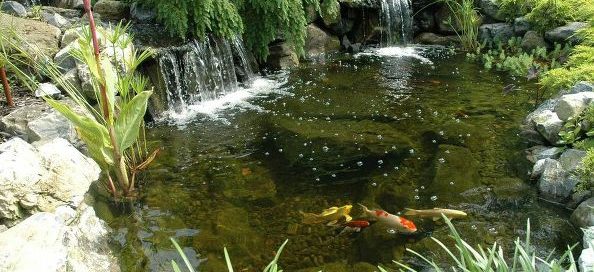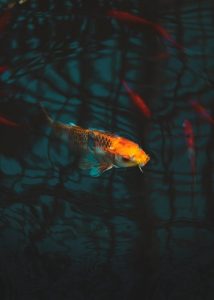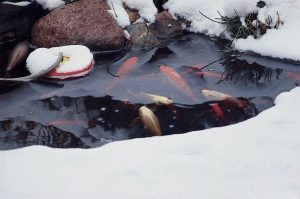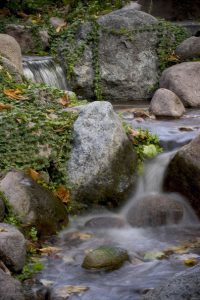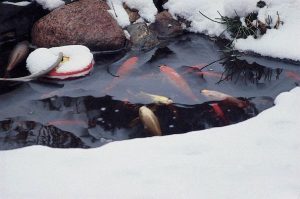Feeding Your Koi: Fall Requires New Routines
And you think you have digestion issues. Well, according to top experts (e.g., The Pond Guy/Aquascape Inc.), your pond fish have real issues digesting their food when the temperature changes.
“Keep feeding your fish summer food,” says our own Dave Stockwell, “as long as the weather is consistently warm. Do this until it gets consistently cool. It’s then you should switch to cold weather food.”
Regularly Check Pond Water Temperature
Begin checking your pond’s water temperature beginning in early fall.
When pond water gets below 59 degrees, you can — and should — plump up your koi darlings to survive winter hibernation. Using fish food made for cold water, gradually increase how much you feed these lovely fish as temperatures start to drop.
As the water temperature continues to drop, gradually reduce the amount you feed them. Once temperatures go below 55 degrees, says Dave Kelly, from Aquascape inc., the metabolisms of pond fish slow way down.
And when pond water gets down to 50 degrees, do not feed the fish any more. Their systems shut down in the colder water, and food sits inside them and rots. They get very sick and diseased from this.
So even though there is nothing cuter than your koi coming to you for more food, once the water gets to 50 degrees, experts say stop feeding them entirely.
Aquatic Plants Maintenance
“Fall is also a good time to trim back and remove any dead foliage from your pond’s aquatic plants this time of year,” says Dave Stockwell. “This helps remove excessive organic material that would otherwise decompose in the water feature. Such decaying material can cause excess gasses and undesirable algae.”
Pond lilies, for example, which are idyllic water plants, tend to need a little maintenance in fall. It’s a good idea to cut them back to just about the base of the plant; also trim back any marginal plants that might eventually droop over into the water.
There is nothing cuter than your koi coming to you for more food. Just a reminder, however. Once the water gets to 50 degrees, experts say stop feeding them entirely.
Welcome to fall!

